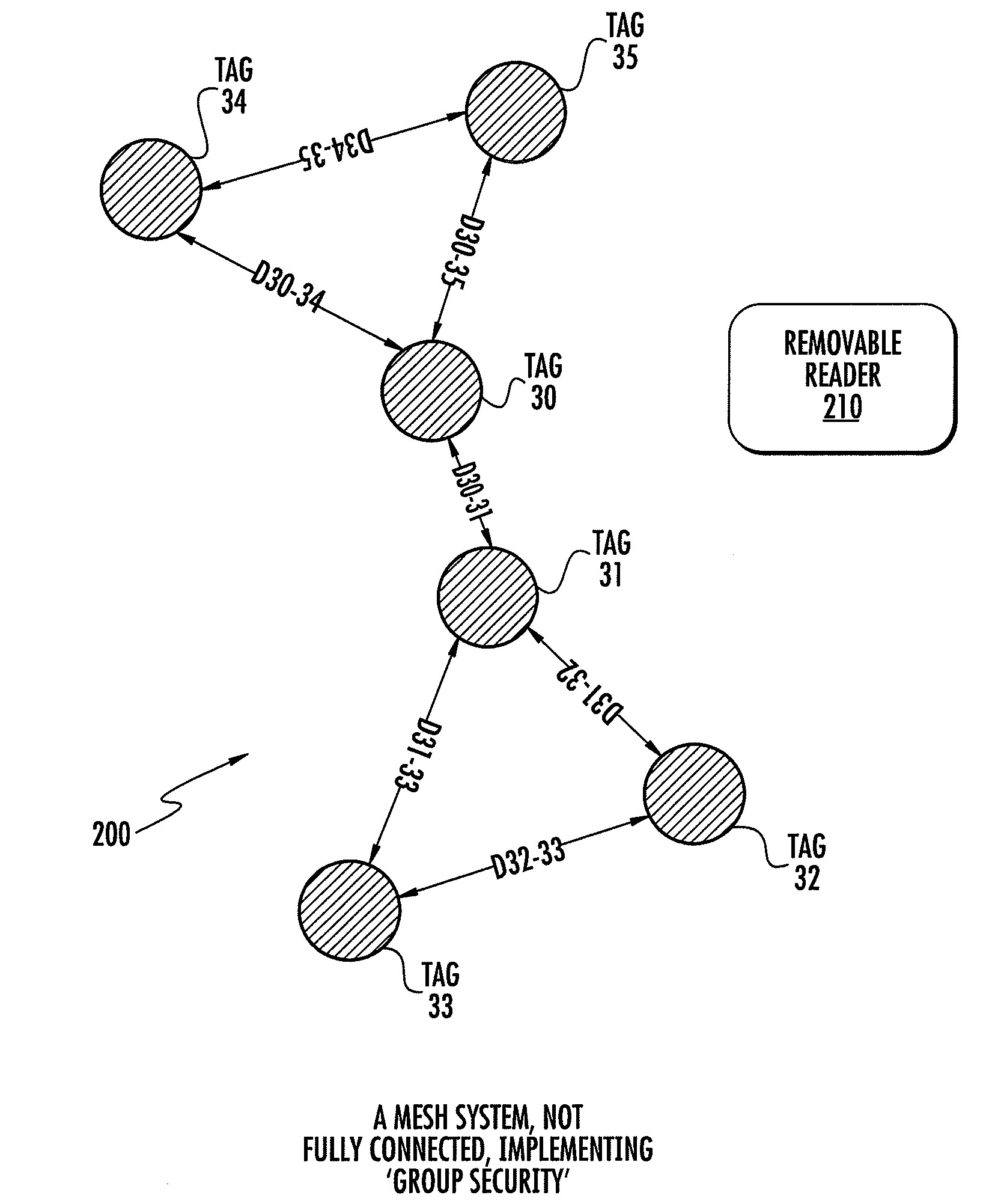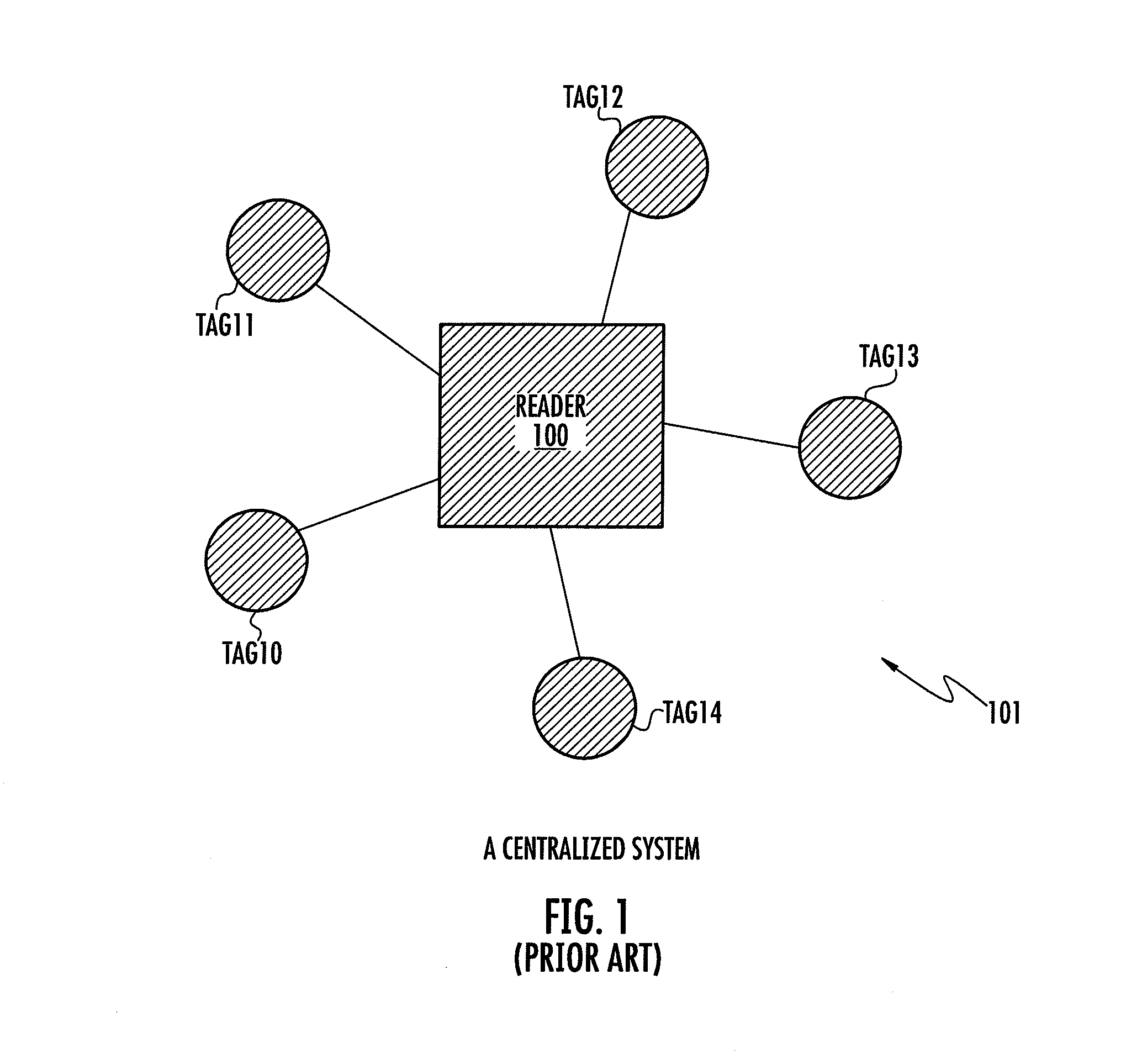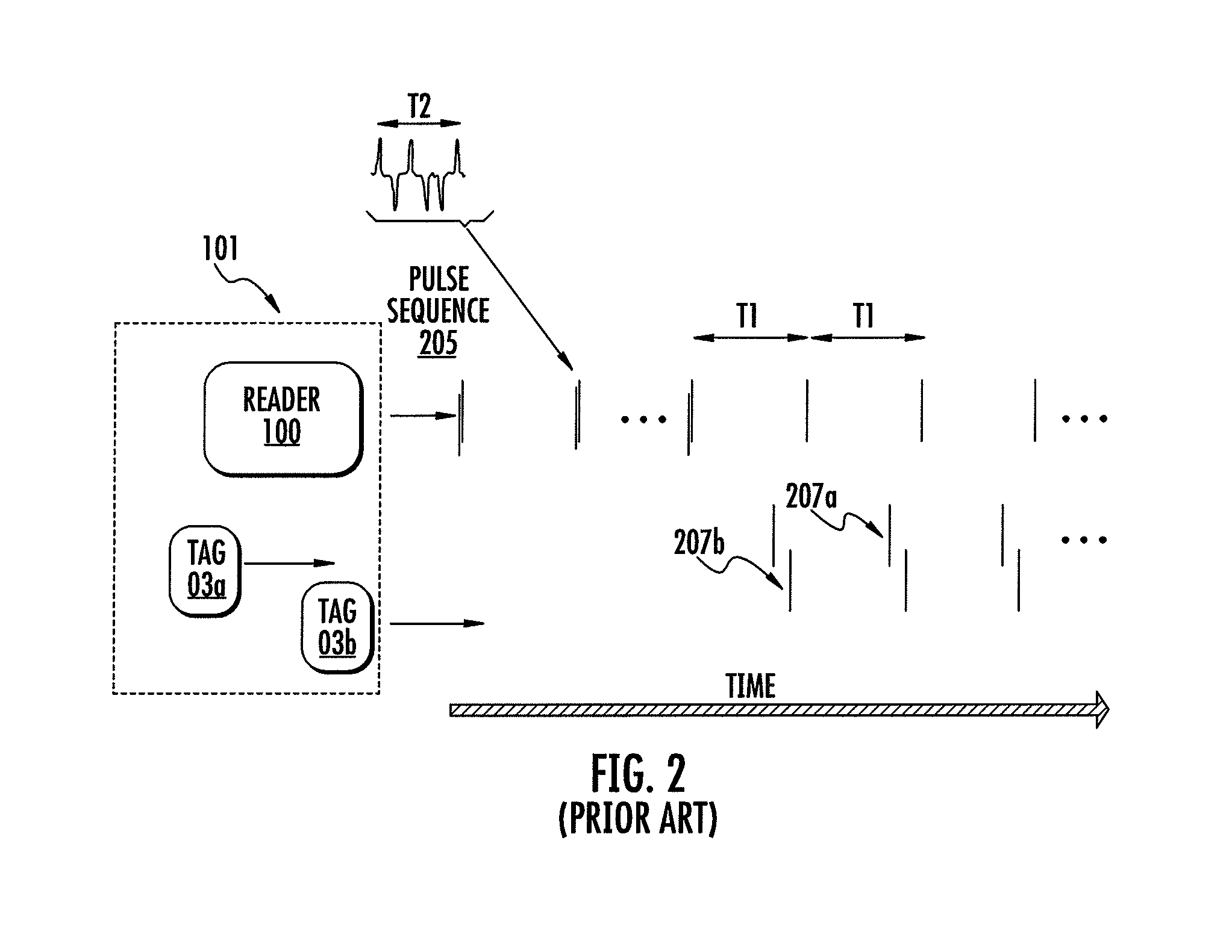Virtual group maintenance and security
a virtual group and monitoring technology, applied in the direction of burglar alarm mechanical actuation, instruments, electric signalling details, etc., can solve the problems of increasing the implementation cost by tenfold, inaccuracy of the range threshold in which the alarm is triggered, and the cost of a relatively expensive monitor (e.g. rfid reader b>100/b>), so as to save battery power
- Summary
- Abstract
- Description
- Claims
- Application Information
AI Technical Summary
Benefits of technology
Problems solved by technology
Method used
Image
Examples
embodiment 201
[0039]An implementation of embodiments of the present invention based on ultra-wide band signaling of active RFID tags, preferably includes the following main characteristics: Each tag can receive and transmit ultra-wide band signals. A tag can communicate with another tag and preferably all other tags in the group. In an efficient protocol each transmitting tag sends a broadcast message, to which all other tags respond, and the originating tag gets immediate information regarding all other tags in the group. This however requires a sophisticated tag receiver processing. In another protocol, each tag transmits a unicast message and receives a response from only one other tag, which in turn is responsible for communicating with the next tag, and so on. For instance in embodiment 201, tag 24 is queried by tag 23, tag 23 is queried by tag 22, tag 22 is queried by tag 21, tag 21 is queried by tag 20 and tag 20 is queried by tag 24. In another protocol, each tag (in his turn) queries eac...
embodiment 200
[0049]Reference is now also made to FIG. 4, which illustrates an alarm system attached to one or more of the tags. The connection to the alarm system may be wired as in alarm 401 or wireless to wireless alarm system 402. In a preprogrammed schedule, each tag of the group interrogates the other tags of the group using either unicast, multicast or broadcast command, and tests each for presence and for being in a preprogrammed authorized range. In embodiment 200, (FIG. 2a) each tag measures the round-trip delay to four other tags preferably using ultra-wide band signaling according to the teachings of WO2003 / 098528. If maximum range is violated, an alarm state is reached. The alarm is communicated to the external world using sound, light, or if there is reader 210 in the area, using an alarm message or interrupt. Alternatively, if there is no reader 210 an alarm is generated using an alarm system 401, 402. In an alternative embodiment, a device e.g. cellular telephone connected to one ...
PUM
 Login to View More
Login to View More Abstract
Description
Claims
Application Information
 Login to View More
Login to View More - R&D
- Intellectual Property
- Life Sciences
- Materials
- Tech Scout
- Unparalleled Data Quality
- Higher Quality Content
- 60% Fewer Hallucinations
Browse by: Latest US Patents, China's latest patents, Technical Efficacy Thesaurus, Application Domain, Technology Topic, Popular Technical Reports.
© 2025 PatSnap. All rights reserved.Legal|Privacy policy|Modern Slavery Act Transparency Statement|Sitemap|About US| Contact US: help@patsnap.com



